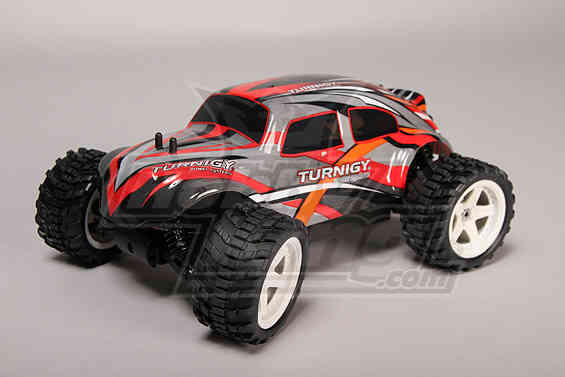Selecting a Rover Frame¶
Building a Rover-based vehicle project from the ground up is entirely feasible, but it’s recommended to start with an existing RC vehicle. Utilizing this approach provides an immediate head start, furnishing you with a pre-assembled frame, complete with wired motor and ESC, thereby streamlining your construction process.
If you choose to begin with a pre-assembled RC vehicle, the main areas of focus should be the successful integration of key components. These components typically include the autopilot system, GPS module, telemetry radio, and an RC Transmitter. The integration process involves carefully mounting these components on the RC vehicle, ensuring reliable connections, and configuring settings as required.
Keep in mind that the list of required hardware can vary depending on the complexity and specific requirements of your project. For instance, you might need to incorporate additional sensors for obstacle avoidance, environmental monitoring, or a companion computer for advanced processing tasks.
Moreover, it’s important to consider the spatial constraints of your RC vehicle while deciding on these components. Smaller RC vehicles may require more compact hardware or innovative mounting solutions. On the other hand, larger vehicles might offer more freedom in terms of component selection and placement, but could present their own unique challenges.

Choosing the Right Scale¶
For those leaning towards a classic car design, a 1/10 scale RC car is a superb choice. 1/10 scale vehicles are often recommended due to their sizable dimensions that facilitate easier maintenance and hassle-free installation of supplementary equipment, such as companion computers.
Although the compactness of smaller-scale vehicles (1/16 or 1/18 scale) might impose a more challenging setup process, the image gallery on this wiki reassures you that overcoming this challenge is wholly attainable with some effort.
For those who favor slow, skid-steering rovers, the Wild Thumper models come highly recommended by the community.
Comparing 2WD and 4WD¶
Performance-wise, 2WD vehicles tend to outperform their 4WD counterparts. This is because their simpler mechanical design results in prolonged battery life compared to an equivalent 2WD model. However, for high-speed cornering or navigation on uneven terrains, 4WD reigns supreme.
Additional Recommendations¶
Opting for vehicles that come without RC units is suggested. This recommendation stems from the fact that the RC units bundled with most ready-to-run RC cars often lack the extra channel essential for autopilot mode control and tuning.
For increased efficiency, durability, and performance, consider a brushless motor.
Consider the placement of the battery and motor on the frame. These will most likely be the heaviest components on your rover and having them as low as possible decreases the tendency to roll over.
Look for a vehicle that offers ease of maintenance and component replacement. You might need to replace or upgrade parts over time.
Think about the power requirements of all components, including the autopilot, to ensure your power supply can handle the load.